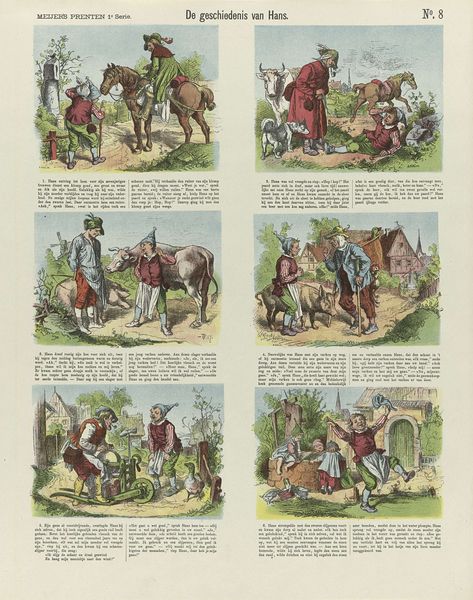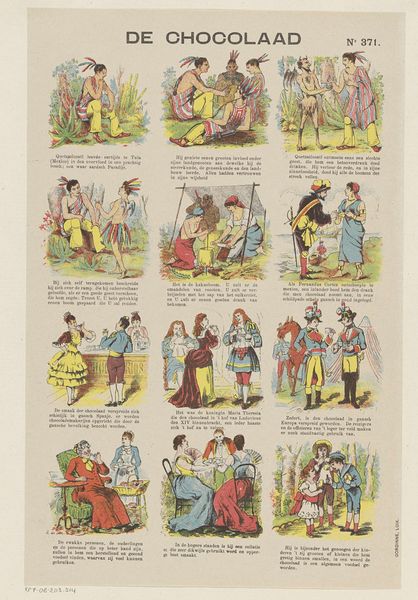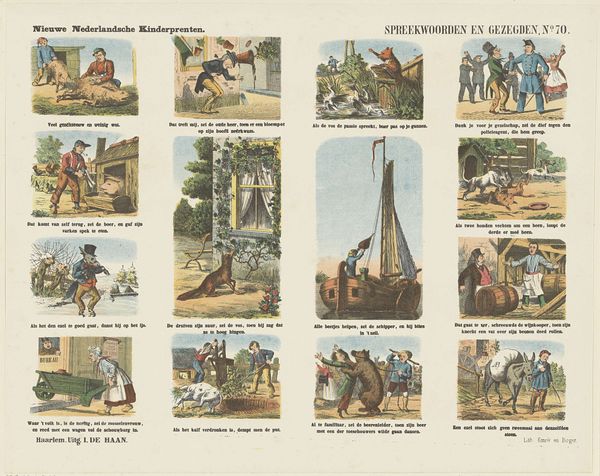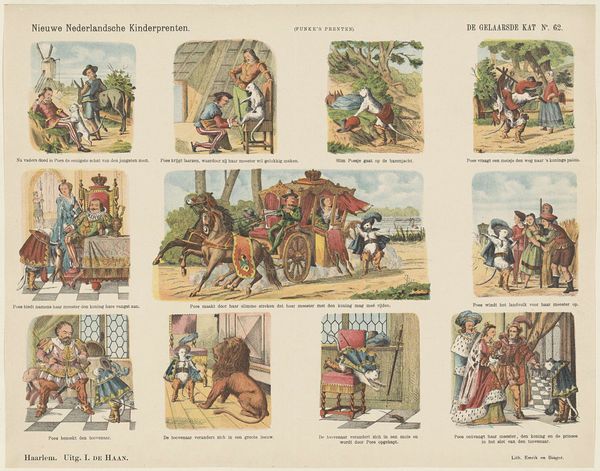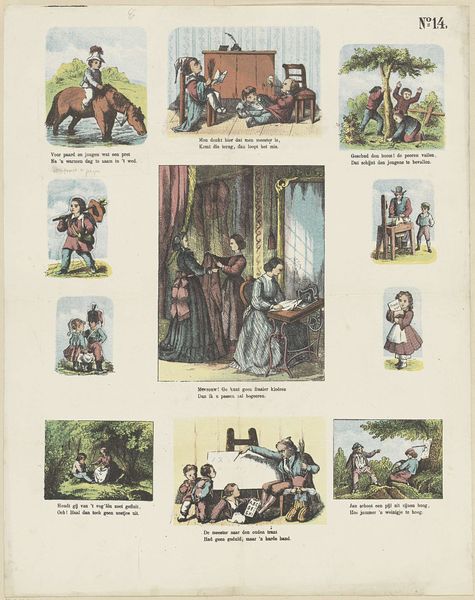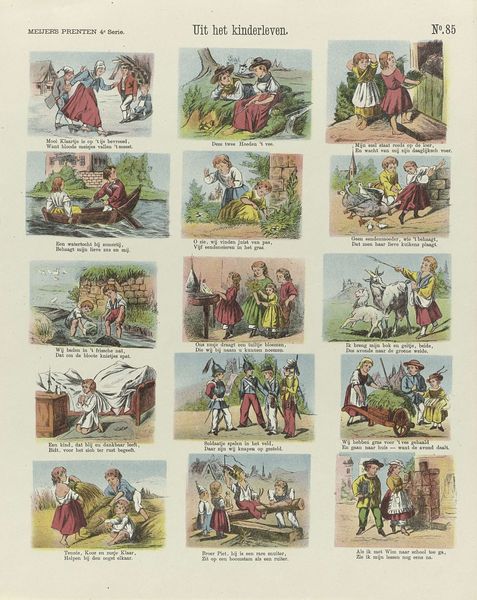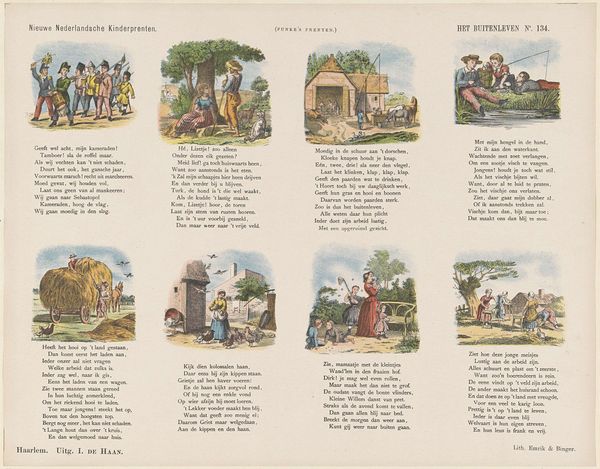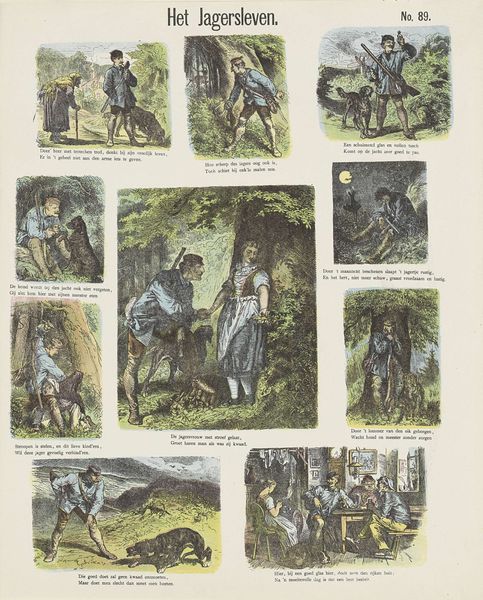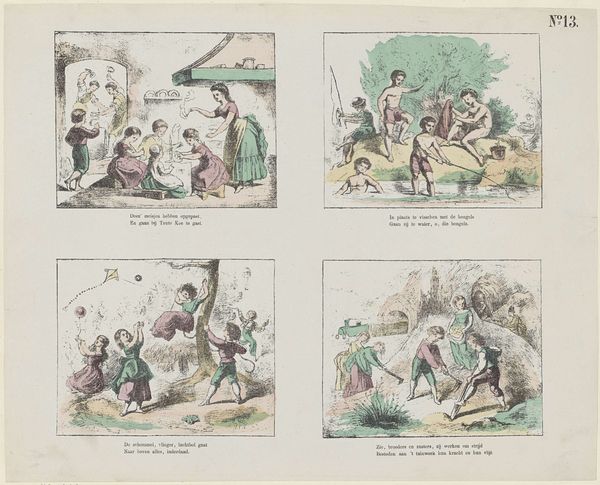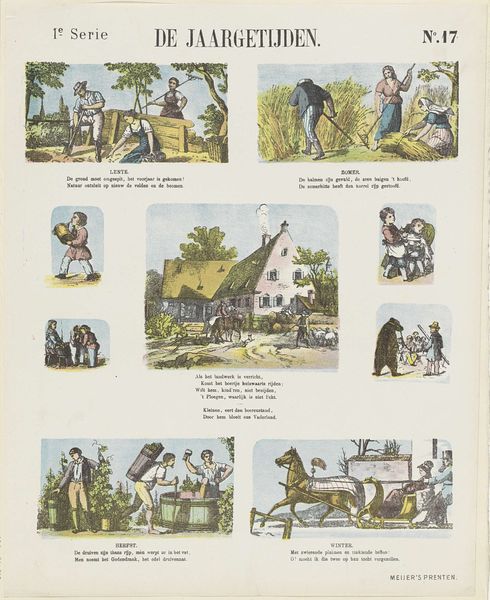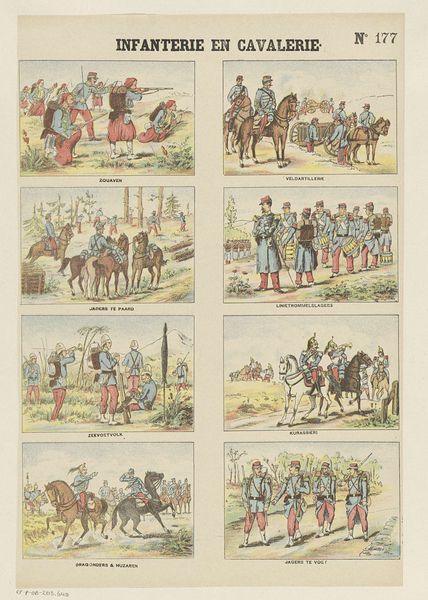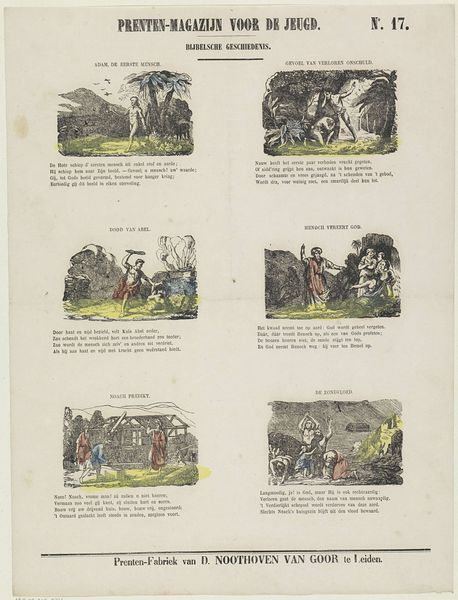
Dimensions: height 339 mm, width 432 mm
Copyright: Rijks Museum: Open Domain
George Lodewijk Funke created this lithograph titled, "Liefde tot den naaste" or "Love for the Nearest," sometime between 1836 and 1885. The composition is neatly segmented into eight distinct scenes. The muted palette is carefully balanced, with each panel subtly echoing the tones of its neighbors, creating a visual rhythm that guides the eye across the work. The structural arrangement here emphasizes a narrative progression. Each scene presents a contained episode, yet the serial nature of the composition invites us to consider the relationships and contrasts between them. Note how the artist uses spatial divisions to create a sense of order and clarity, making complex moral concepts visually accessible. The semiotic function is evident in the layout of the print, which seems intended to teach a clear moral lesson. The formal qualities of the work – its segmentation and tonal harmony – support its didactic purpose, reflecting how visual structure can reinforce narrative meaning.
Comments
No comments
Be the first to comment and join the conversation on the ultimate creative platform.
